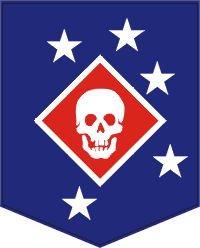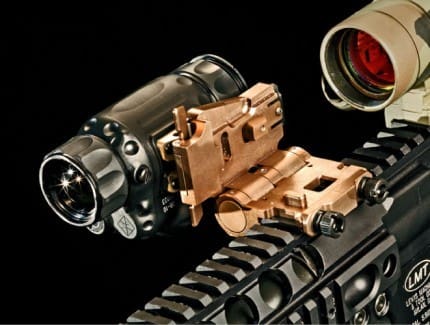TAMPA - The top enlisted leader of America's most elite and secretive military forces stood with his wife before a classroom of senior commandos here to speak about war's destruction. Not on the battlefield -- but within the walls of their home.
"We're going to share some pretty ugly, personal stuff here today," Command Sgt. Maj. Chris Faris, 50, warns an audience of 30 special ops veterans, nearly all married men.
"This is the way not to make a marriage work," says Lisa Faris, 47, echoing her husband. "We succeeded in that. But let me tell you, there are ways to fix it if you try."
For the next two hours and 16 minutes recently at the Joint Special Operations University, the room full of commandos was a rapt audience for Lisa and Chris -- for years a member of the Army's highly secretive Delta Force and recipient of seven Bronze Stars, including one for valor. They outlined the near-collapse of their 22-year relationship.
"My gut tells me that our story probably rang true for most everybody in this room," Chris Faris says at the conclusion.
"The Chris and Lisa Show," as he labels it with grim humor, is part of a broad initiative by Adm. William McRaven, commander of U.S.Special Operations Command, to deal with mounting emotional strain on his 66,000-member force. Indeed, the long wars in Iraq and Afghanistan have pushed many troops to their limits, with a spillover effect in military families that can test relationships and often end them. Even as the war in Afghanistan winds down, special operations troops -- including Delta Force, Navy SEALs, Green Berets and Army Rangers-- are expected to continue playing a crucial role, fighting at a high tempo.
In a rare moment for a largely secretive military force of openly acknowledging a decade of war strain, the command allowed a reporter to sit in on the couple's candid presentation.
For more than a year, Chris Faris has talked to small groups of special operations troops about his marital struggles in an effort to help them deal with theirs. Only recently did he ask Lisa to lend her voice to the cause and invite servicemembers' spouses to these sessions.
McRaven says that Chris and Lisa Faris "are doing something very personal and powerful for our community -- they're sharing their story with everyone. Our servicemembers and spouses need to know that they are not alone with their challenges and problems."
Last year, Special Operations Command conducted a broad internal study of stress on its force. Hundreds of focus groups drew 7,000 troops and a thousand spouses at military locations around the world, and the findings were sobering: Many marriages had become lifeless unions in which couples stay together only because military spouses are too busy in combat zones to file for divorce.
Lisa speaks to this inertia at one point when she tells the audience about asking a therapist "how I could get the strength to find out what was wrong with me. And how I could get the strength to walk away from him."
When the session ended, troops in the room were bursting with questions. Citing their own marital struggles, they were eager to learn how to save a relationship -- a growing challenge in the military. Within the Army at large, for instance, divorce has risen by 25% since 2005, from 3.2% to 4%, according to Pentagon data. The national rate in 2009, the most recent year available in federal data, was 3.4%.
Chris and Lisa relayed painful lessons: how shutting down human feelings, a skill sharpened during intense combat, becomes a hazard at home; how years away at war robs a couple of the ability to listen, understand and simply like one another.
The deleterious effect of a long war, Chris says, "was insidious and it was slow and it crept into our lives."
He began fighting for his marriage in 2008 only after an 18-year-old daughter's simple admonition regarding the last time he was home for her Dec. 27 birthday.
"She goes, 'Dad, I was 10,' and she turned around and walked out of the room," Chris Faris says. "Every day that (has) passed, I realized I'm going to die with regrets."
Anger, and accepting death
Chris Faris was already a member of Delta Force when he met and quickly fell in love with Alicia Hill at a comedy club outside Fort Bragg, N.C., in 1990. She was equally smitten, and they married about four months later.
By October 1993, he and other Delta Force operators were fighting for their lives on the streets of Mogadishu, Somalia, during the famed Black Hawk Down incident that left 19 Americans dead. What began as an incursion by U.S. forces to safeguard international efforts to end famine turned into a hunt for insurgent warlords, the focus of the mission that day.
Seeking refuge in an outhouse from a fusillade of fire, Faris remembers pain from the impact of a bullet that, while not penetrating body armor, caused internal bleeding. A crippling fear welled up, Faris says, and he fought to overcome it in two ways: He turned it into anger; and -- more consequentially -- he forced himself to accept his own death, bidding his wife and two young daughters farewell.
Faris says this helped him survive that day. But as Lisa tells the audience, the Chris that returned home from that fight was different.
"Something had died inside of him and he was there. But he wasn't there," Lisa says.
With all of the funerals for soldiers killed in Mogadishu, Lisa said she wanted to savor the husband who had come home to her: "He was like chocolate, and I just wanted to eat him." But he kept his emotional distance, she says, "separating himself" while readying for the next mission.
Those missions, some of them classified, continued through the 1990s. But there were still moments of happiness as their daughters grew up, Chris and Lisa say. Everything changed after 9/11.
From 2001 to 2011, he was at war a total of nearly six years. It was a period of advancement as he rose to senior non-commissioned officer for Delta Force by 2004; and, by 2008, to Joint Special Operations Command-- which overseas all classified operations such as Delta and SEAL Team 6, the commandos who killed Osama bin Laden last year.
Between war abroad and his leadership duties stateside, Faris was home during those years for no longer than two months at a time.
Detachment and rage
"Around 2006 is when she looked at me," Chris tells the audience, "and she said, 'It's too hard to try to reintegrate with you. ... Let's just live together as roommates."
Immersed in the heart of the war effort in Iraq and Afghanistan -- in a world where special operators went out every night to capture or kill al-Qaeda fighters -- Faris says his alienation from his family was nearly complete, as war consumed him.
"Now the killing starts and the wounding starts and the dying starts," Faris tells the audience.
During the worst of the fighting in Iraq, in 2006-07, elite special operations troops were being killed at rate of two every month. Faris was managing troops whose morale was becoming fragile. When he was home, he found himself studying his watch when he knew nightly missions were underway in Iraq. He dreaded phone calls bearing dire news from the front. And he would personally handle death notifications and the withering reaction of families in shock, witnessing "the most blood-curdling screams you'll ever hear," Faris says. "I'm coming home and I'm angry and I'm pensive and I'm tense."
At this moment of critical mass in his marriage, Faris says, he walked into the dining room where his wife and daughters were at the table discussing American Idol one evening, and he exploded: "Shut the (expletive) up. What is wrong with you? Have you no concept of what is important in the world? Do you know what's going on? The three of you disgust me."
Faris pauses in his telling of this, allowing the words sink in.
"It was a full-on rage," he adds finally. "And I felt completely justified."
'Walking away'
"When that happened," Lisa says, "we were so far gone. ... Any bit of drive that I had to make it work -- it was like he killed it."
To the world outside, they were this strong Army couple ministering to families in grief. At home, it was arguments, strained dinner conversation and simmering resentments.
From their home in Fayetteville, N.C., she had her own vision of the war. "I lost more friends. There were so many casualties from home. Not from death. But from (wives) just quitting. From (them) walking away from their situations because they just did not have the strength to do it anymore."
Lisa was also deciding secretly by 2006, she says, that the marriage was over -- something her husband said he never realized until they both began telling their stories this year.
It was the epiphany Chris had in 2008 -- triggered by his younger daughter's chastening remark about missed birthdays, and a long contemplative plane ride back to Afghanistan -- that began the turnaround. The next year, he came home pleading with his wife to begin marriage counseling.
"I'm on bended knee, 'Hey, I got it. I screwed up. This is the last chance. I love you,' " Chris says.
She was reluctant. They had attempted counseling without success. But this time, the counselor helped them see the walls they built between them, and the bricks began coming down.
"She actually gave us the desire to try," Lisa says.
A work in progress
"By no stretch of the imagination should you walk out of this room thinking that our marriage is fixed," Chris tells the troops. "It's not. We're still working at it. But the key is, we're committed to working at it."
This month, Chris and Lisa dissected their marriage again before Navy SEALs and their spouses in San Diego. This week, they are addressing audiences of Army elite troops and spouses in sessions at Fort Bragg. They will continue the presentations to reach as many special operations troops and their families as possible.
The message for their ongoing discussion is always the same.
"The commander and I are absolutely committed to preserving the force," Chris says.
The first step is seeking help, he says.
"All we need," Chris says, "is for you guys, without going into any detail at all, to simply raise your hand and say, 'Yes, my story is similar to Sgt. Maj. Faris' and Lisa's."







